How To Keep Bees Off The Hummingbird Feeder
Hummingbirds are attracted to feeders that have skilful nectar recipes, but bees are also attracted to nectar. Understanding how both birds and bees human activity can help in our feeding dilemma.
But the question remains – how to keep bees abroad from hummingbird feeders? There are many ways to attain this without harming birds or bees. Here are the best tips that actually work.
i. Install bee guards
If your hummingbird feeder is bee proof, then that means yous will brand the feeding holes smaller so that no bees or other insects can become into it. Some hummingbird feeders y'all buy will come with bee guards already congenital in place.
The first thing to consider is to buy a proper feeder with a bee baby-sit, just if y'all already take a feeder, then you tin can just install a bee baby-sit.

Hummingbirds take long beaks and tongues which are able to reach sources of nectar, mainly from the vault of flowers. Putting on a mesh or bee baby-sit around the feeding ports keeps the bees from passing through the holes, which means they can't reach the nectar and they will eventually requite up pursuing it.
Bees will only call for reinforcements if they have access to the nectar. Otherwise, there won't exist a bee swarm if just a couple investigating bees fail to become the nectar.
two. Employ carmine saucer feeders
Hummingbirds can accomplish the nectar with their long tongues, only insects can't. While hummingbirds are attracted to the color red, bees are attracted to the color yellow.
Depending on which type of feeder you get, some types of hummingbird feeders are less insect-friendly than others. With saucer feeders position nectar away from the feeding port, to a point where insects will exist unable to reach it.
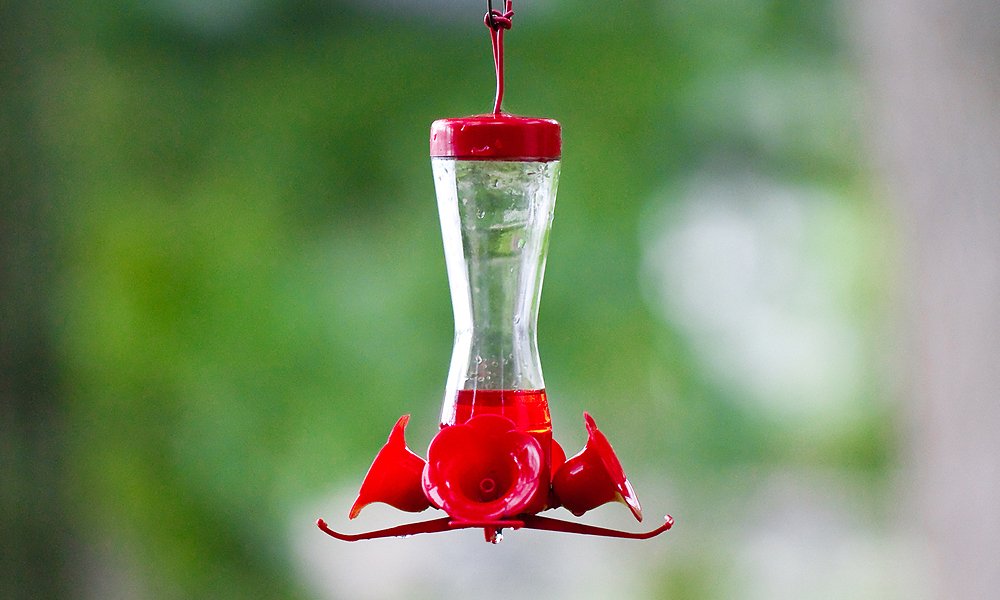
Other feeder designs include congenital-in pismire moats or bee guards that are specifically designed to keep insects from accessing the nectar without stopping the hummingbirds. Actress accessories are available to add together to any nectar feeder.
Bees can be guided to a basin filled with 1 to two parts carbohydrate and ane part water mix. Position a basin in a identify not likewise far from the hummingbird feeder. Once the bees are attracted to the basin, move the basin to a sunny spot a lilliputian further away from the feeder.
3. Relocate the feeder oft
Once hummingbirds notice a food source, they will frequently visit it and volition look around nearby for other food sources. Constantly moving hummingbird feeders tin be a useful tactic to create confusion and keep bees abroad from hummingbird feeders.
While you tin can movement the feeder just a few feet away, at that place is a chance the bees will observe information technology again rapidly. Relocating the feeder too often can result in confusing the hummingbirds besides as the bees, so make sure you accept your schedule for moving the feeder rigid but not also rigid.

Most of the time, insects are only probable to visit convenient sources and probably won't search for relocated hummingbird feeders. Moving the feeder a few feet can minimize visits from insects without discouraging hummingbirds.
If your one thousand has multiple feeding stations when birders merely switch where different feeders are positioned throughout the yard every time the feeders are refilled, then this will be piece of cake to attain. This method will too keep ants away from hummingbird feeders.
four. Apply decoy feeders
Having a feeder that is basically a indistinguishable of your hummingbird feeder but made for bees is an effective way to go along bees abroad from hummingbird feeders.
Place this bee specific feeder near the hummingbird feeder, and hang this detour feeder in the total sunlight they prefer, and utilise a sweeter sugar water solution. Anything that is stronger than a 5-to-1 water-to-sugar ratio is effective bee bait.
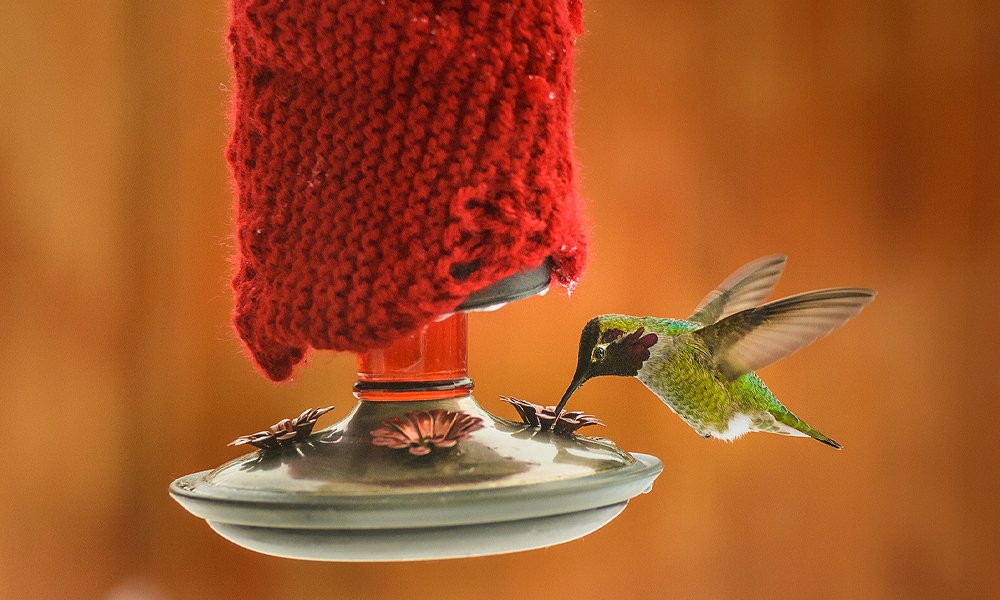
Identify a very shallow bowl with this solution well-nigh 5 or 6 anxiety abroad from hummingbird feeders. You lot may demand to begin closer to the feeder and then move it further away incrementally. This will continue bees effectually to pollinate your flowers while giving them an alternative nutrient source.
Always go along in mind that insects will visit the near convenient food sources first, then whether it is merely a bowl or some other bird feeder, brand sure that the feeding source is open up plenty for the bees to access.
five. Find and stop the leakage
1 of the nigh common reasons why you can't go on bees away from hummingbird feeders is the leakages that come from the feeders. You can't afford to let your feeder go unchecked for any slits or leakages.
Dripping sweetness carbohydrate water will invite other insects similar ants to hummingbird feeders. Having a small leak occasionally is non a business, but when the drips and leaks get both consistent and big, then it is necessary to finish the flow.
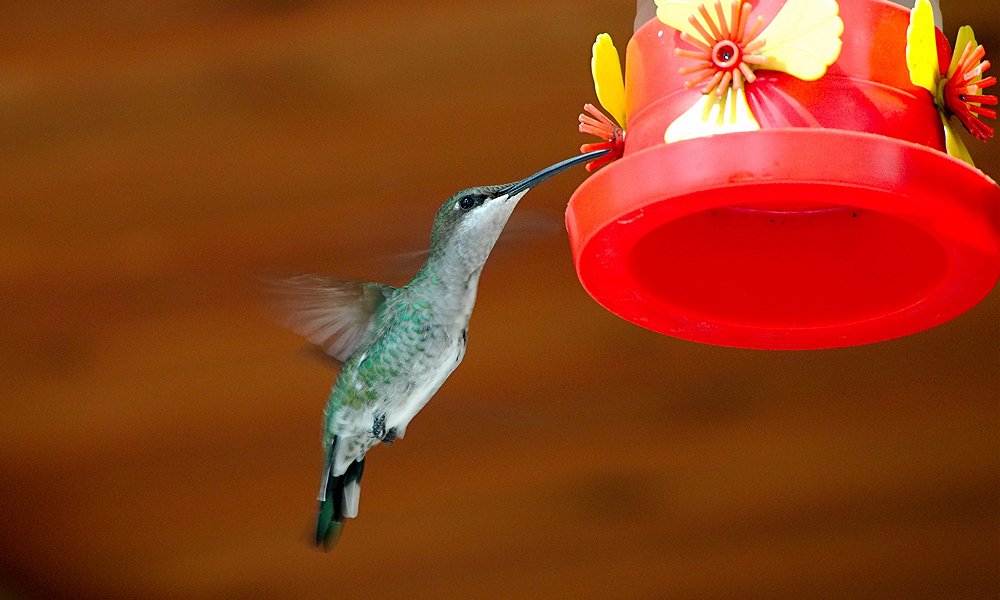
At that place are several ways to tighten a feeder and reinforce the seals to minimize leakage. A good seal betwixt the canteen reservoir and the feeder ports does the job. A weak or uneven seal will leak easily.
To reinforce a seal, use plumber'due south tape over the threads where the feeder screws together to tighten the seal and minimize any existing leaks. Keep the tape out of contact with the nectar to prevent contamination.
6. Make the nectar less sweet
Dear bees are quite partial to sugar, peculiarly sucrose. When there are plenty of nectar sources around, bees will stay away from flowers whose nectar is a little weak on the sugar concentration similar pear blossoms.
Since they are after the sugar, it would be a skillful idea to alter the sugar ration in your hummingbird feeder then that the bees will lose interest in the sugar water. For your hummingbird feeder, effort a 5:1 water to saccharide ratio.
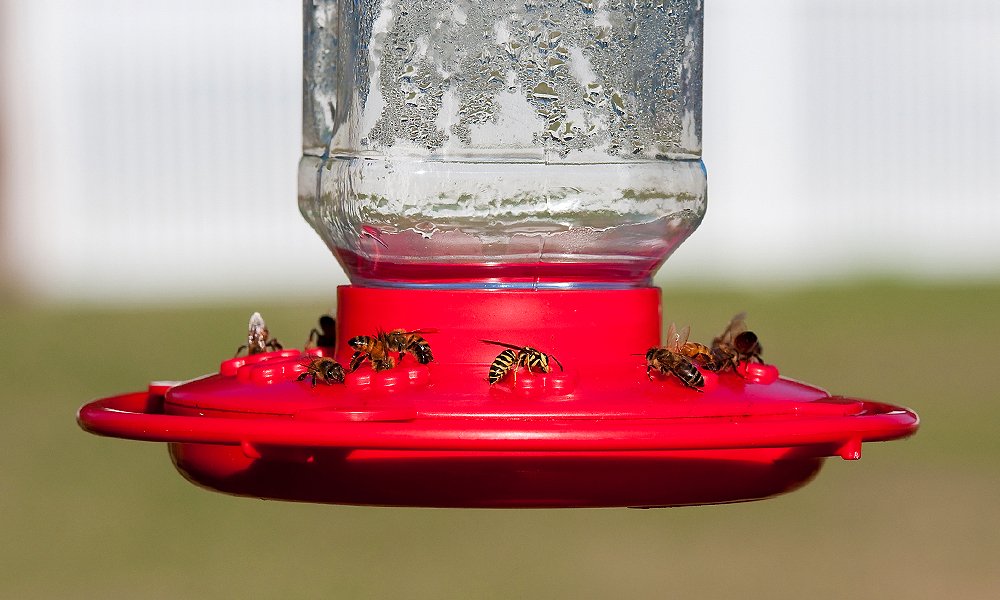
Bees value higher concentrations of sugar, and then in their own feeder, provide them with a carbohydrate ratio that suits them. The standard water to sugar ratio for hummingbird feeders is one to 4.
Adding just one extra portion of saccharide to a bee feeder should do the job. Ideal water to sugar water ratios for bees and wasps and other insects would be to first at 3:1, and and so make adjustments whenever necessary.
vii. Avert annihilation yellow
Due to the color of flowers and other food sources where bees find pollen and nectar, they are naturally attracted to the color yellow. However, they don't observe ruby as appealing. Avoid having feeders with yellow insect guards or blossom accents to minimize the entreatment to bees.
If you have a feeder that has yellow anywhere on it, repaint those parts with red, non-toxic paint. A good instance of a feeder that discourages bees because it has no yellow on it would be the HummZinger feeder.
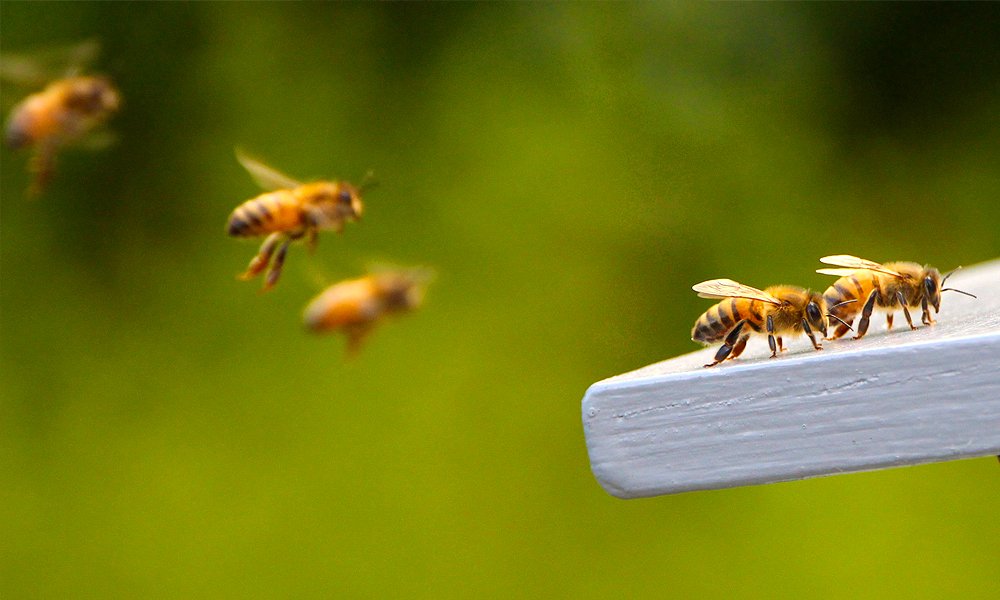
Some colors, like yellowish and blue, have more influence on bees than others. Compared to humans, bees see in a slightly dissimilar spectrum.
They are able to run into into the ultraviolet part of the electromagnetic spectrum that humans tin can't meet. Because of this type of vision, bees are too unable to run into the colour ruddy. The color blackness signals danger for bees, warning them to stay away.
8. Grow a pollinator garden
Bees pollinate over 80% of all flowering plants, including lxx of the top 100 man food crops. Around 1/3 of the nutrient we swallow traces back to plants pollinated by bees.
If you have an alternative floral source of nectar that the bees tin't resist, and so they will leave the hummingbird feeder solitary. You could also employ pollinator seeds to plant some flowers for the hummingbirds and enjoy the wonderful hum radiating from your garden.
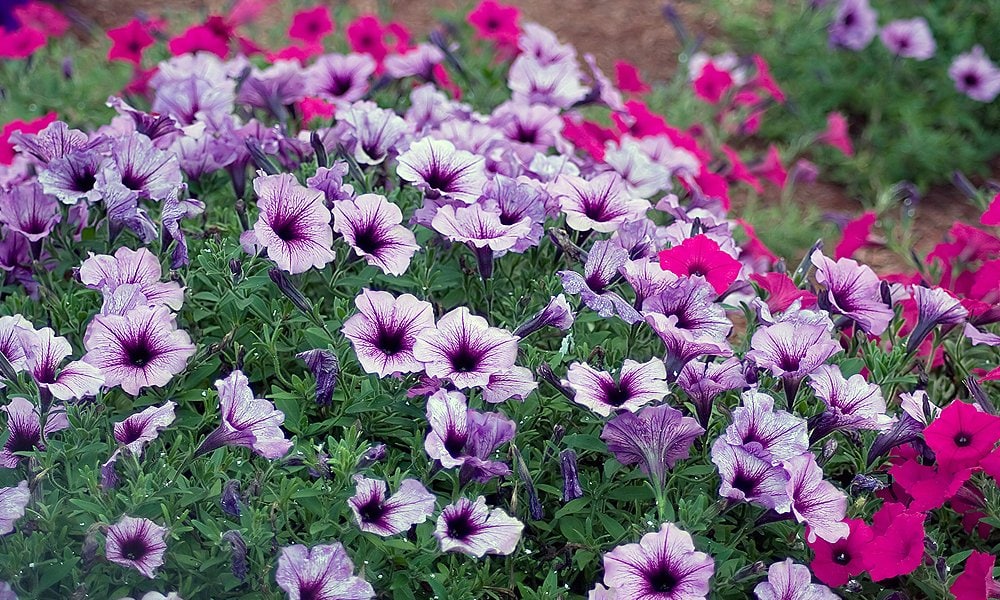
Making a pollinator garden depends on what is suitable for both hummingbirds, and the plants you choose will vary depending on climate, location, and soil type. Mix annuals and perennials and choose flowers with staggered bloom times to ensure arable food sources as long as possible.
Flowers that concenter both hummingbirds and bees alike include Bee Balm, Trumpet Creeper, Petunia, and Zinnia. All of these flowers, except for Bee Balm, feature the color xanthous, which attracts bees.
9. Clean the feeder on a daily ground
Drips of nectar will inevitably autumn from their bills onto the feeder equally birds feed. Hummingbird feeders tin too drip if they are filled too full. The nectar is forced out of the feeder because of the air force per unit area inside.
Every time you lot refill hummingbird feeders, carefully clean the outside and around the feeding ports to remove any spilled nectar. Also, accept time to repair any cracks and supersede any parts of the feeder to minimize leaks.
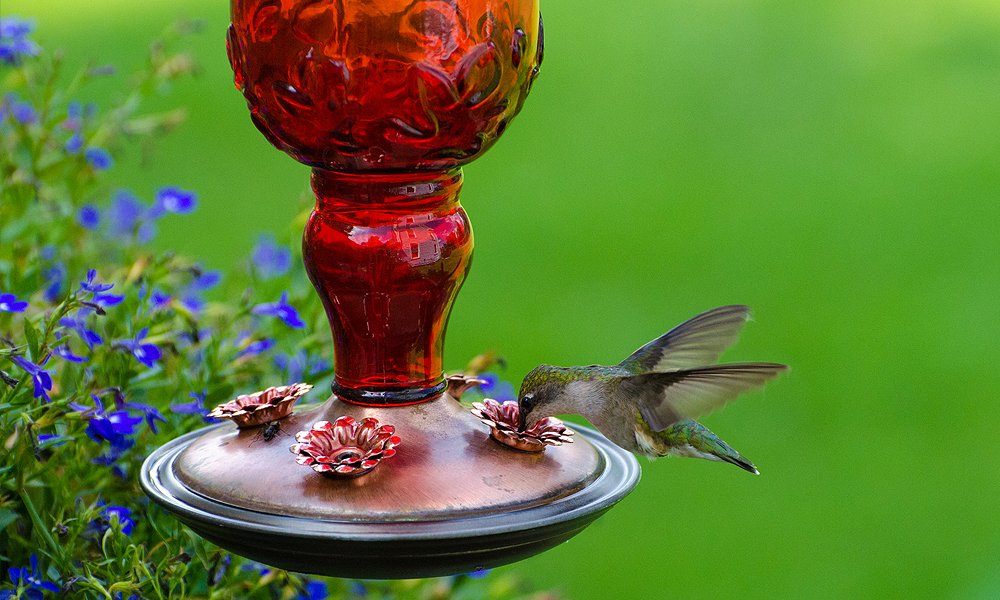
Even if small-scale in size, exposed portions of nectar that form a mess can attract insects to your feeder, including bees. Insects can smell leaked nectar and sticky stains, and they will take advantage of whatsoever spills.
Information technology is recommended to clean hummingbird feeders on a daily basis, but this process only takes xxx seconds of your time. Hummingbird feeders are non hard to handle as they have a grateful shape and are more simple to clean.
10. Try a shaded location
Both hummingbirds and bees volition feed on your feeders wherever they are located as long as they are attainable. However, bees are used to looking for pollen and nectar in the sunlight because that is where most flowers flower from.
Past hanging hummingbird feeders in a spot that has some shade, yous volition make them less bonny to bees. It also helps to hang your feeders in the shade because that will prevent the nectar from spoiling too rapidly.
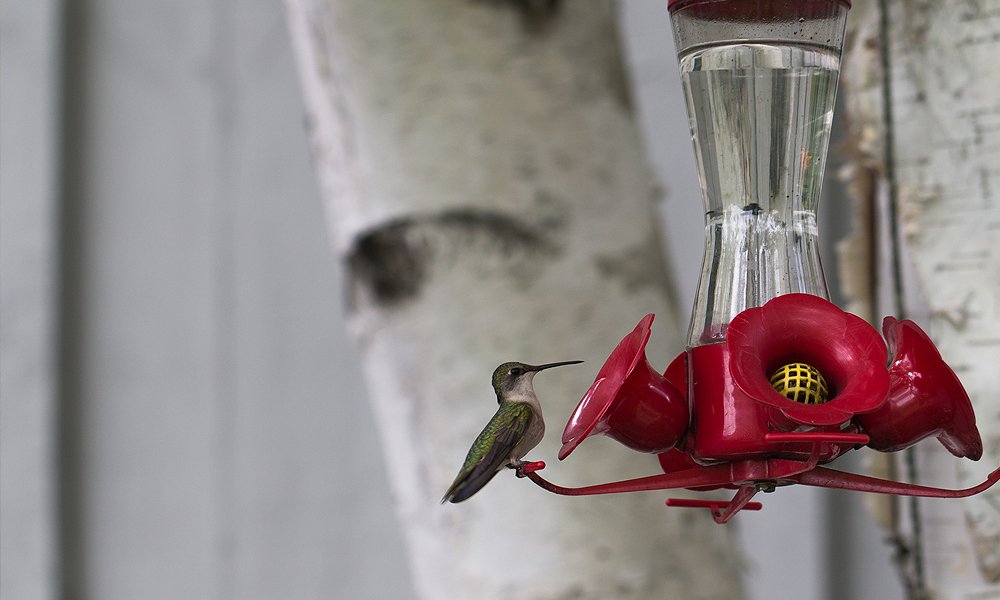
The shade keeps the nectar cool and slows down the fermentation process. Hot weather volition expand the feeder if it is made up of plastic and this expansion tin can upshot in leakages.
Still, it is important to note that keeping hummingbird feeders in a fully dark and shaded area will lose its entreatment to hummingbirds because they won't be able to find it, then the ideal place will be a partially shaded expanse.
11. Add fake wasps' nests
Wasps are very territorial and they will instinctively non build whatever of their own nests nigh another colony. The presence of a wasp nest would deter bees and other insects from accessing food sources around the nest.
Bees and yellow jackets could motion away, thinking that your m was already taken. If you want your faux wasp nest to appear as real every bit possible, then make sure the deterrent nest measures in at eight x xi inches.
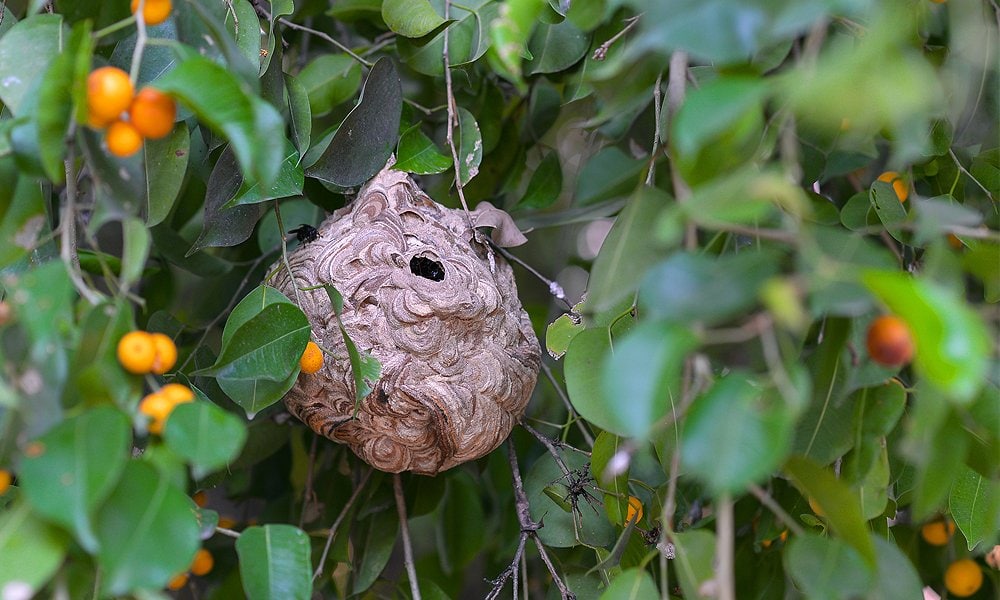
It is important to annotation that wasps similar yellow jackets will mainly nest on or in the ground, which ways that sometimes they won't care about the false wasp nests hanging outside the domicile.
Yellowjackets are very aggressive and volition almost never be deterred by a fake nest as they volition gladly become close to inspect information technology. However, fake nests are effective deterrents, especially in the early spring months, when they offset looking for new locations to settle in.
12. Consider insect traps
While we want to keep bees away from hummingbird feeders, the reality is that bees are not bad past themselves. They serve equally great aids to your garden via pollinating and they create sweet nutrient sources in beloved.
Commercial insect traps are available to reduce insect populations in your 1000. Information technology is recommended to use these traps sparingly because yous don't want to disrupt the insects' place in your yard'due south ecosystem.

Hummingbirds and many other wild birds eat insects, then it isn't recommended to spray insecticides or oils that kill bees and wasps, and other insects or to identify any harmful chemicals inside traps. Insecticides and oils can contaminate the nectar and potentially harm hummingbirds.
Only choose traps that will target the most problematic insects and remove traps as presently as the hummingbird feeder is no longer existence troubled. Having too many traps tin can drastically destroy important insect populations.
Source: https://worldbirds.com/how-to-keep-bees-away-from-hummingbird-feeder/

0 Response to "How To Keep Bees Off The Hummingbird Feeder"
Post a Comment